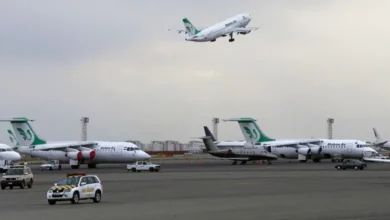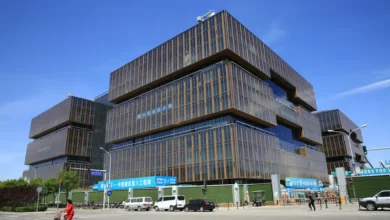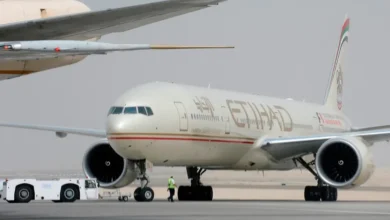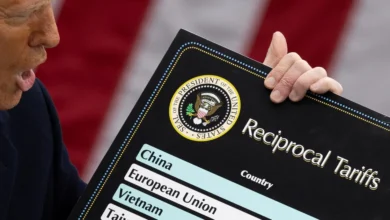Saudi Arabia’s transformation from oil to green energy

Saudi Arabia, a country historically synonymous with oil production, is making strides toward sustainability. Once reliant solely on its vast oil reserves, it is now embracing a green energy revolution that promises to reshape its economic landscape while safeguarding its environmental future.
According to data released by the International Renewable Energy Agency (IRENA), Saudi Arabia experienced a staggering 219 percent year-on-year increase in renewable energy capacity in 2023. This surge, reaching 2689 MW, outpaced its regional counterparts.
Propelled by its ambitious vision, the Kingdom aims to increase its use of non-oil fuels to meet its growing power demand and diversify its energy mix. The Saudi Vision 2030, launched in 2016, set an initial goal of deploying 9.5GW of green energy by 2030. However, the target has been revised multiple times, with the latest update in 2023 setting a new goal of 130GW of renewable power capacity by 2030. With stronger policies, competitive auctions and financial measures, experts believe the desert country can achieve its renewable energy target.
A recent report published by GlobalData, a data analytics and consulting company, showed that renewable power projects under construction in Saudi Arabia surpassed 8GW by the end of 2023. This is primarily attributed to projects awarded through auctions in the past 18 months. There are also plans for an additional 13GW of renewable power capacity in various stages of development.
The early months of 2024 have been equally promising with ACWA Power securing $2.3 billion in funding for 4.55GW of large-scale solar parks in Saudi Arabia.
The financing will go for the Ar Raas 2, Saad 2 and Al Kahfah solar photovoltaic projects, which will be located in the central and northern regions of the Kingdom.
ACWA Power, which owns a 50.1 percent stake in each of the three projects, secured a credit facility from a consortium of local, regional and international banks, including Saudi Awwal Bank, Banque Saudi Fransi, HSBC and Standard Chartered Bank.
Saudi Arabia’s renewable energy potential
“The major driver for renewable energy in Saudi Arabia is economic,” Jessica Obeid, energy policy consultant and head of renewables at research company Think Research and Advisory, told Al Arabiya English. “By reducing domestic demand for fossil fuels, the Kingdom can free up barrels for export, bolstering its economic resilience.”
“As natural gas surpasses oil as the dominant source of power generation in Saudi Arabia, there is a pressing incentive to curtail domestic demand,” she added, highlighting the economic rationale underpinning the Kingdom’s renewable energy drive.
Beyond economic considerations, the country benefits from several key enablers for the establishment of mega renewable energy plants.
“Factors include the financial capacity to develop bankable projects, abundant renewable resources—particularly solar and wind—and vast expanses of land ripe for development,” Obeid noted.
Moreover, being one of the world’s largest producers of hydrocarbons, Saudi Arabia is poised to become a leader in low-carbon technologies, according to Obeid.
“As global pressure mounts to reduce emissions, investments in cleaner energy and low-carbon technologies—such as hydrogen and carbon capture and storage—are set to soar,” she said.
The integration of renewable energy, however, presents unique challenges, requiring flexibility systems, storage solutions, and grid upgrades and infrastructure.
“I expect the focus on these aspects to intensify in the near future,” Obeid remarked, “especially with the proliferation of variable renewable energy sources like wind and solar.”
She also highlighted the potential of geothermal energy to optimize renewables integration into the grid.
“With its ability to meet baseload demand, geothermal power could play a pivotal role in ensuring a seamless transition to a renewable-powered future,” she suggested.
Saudi Arabia boasts extensive geothermal energy reservoirs, particularly along the Red Sea, owing to substantial heat flow from deep within the Earth’s crust. Geothermal energy offers a sustainable source of baseload power, suitable for a variety of applications including district heating/cooling, water desalination and electricity generation.
Economic impact of clean energy investments
Global shifts toward sustainability have prompted nations worldwide to prioritize investments in clean and renewable energy. In the Middle East, the range and speed of renewable projects serve as encouraging signals within the region and for its global partners in both the public and private spheres. The transition toward clean energy represents a pathway to economic diversification and growth, particularly significant for countries seeking to reduce their reliance on traditional hydrocarbon industries.
Over the next five years, the MENA region aims to incorporate an additional 62GW of renewable energy capacity, as stated by the International Energy Agency (IEA), in alignment with the commitment made at COP28. The rate of expansion is projected to escalate, exceeding threefold compared to the preceding five-year span, with solar capacity contributing to over 85 percent of the increase.
In line with this trajectory, Saudi Arabia has emerged as a notable participant, strategically investing in clean energy efforts to drive economic diversification. Analysts believe that these investments carry major economic implications, driving prosperity within the Kingdom’s economy.
“Firstly, from a foundational economic standpoint, the projects in question represent value-added, productive endeavors of strategic importance. They not only stimulate economic activity but also address the pressing need for economic and energy diversification, catalyzing job and output growth while likely yielding attractive returns for investors,” Adel Afiouni, senior investment banking and institutional finance executive and Lebanon’s former minister of state for investments and technology, said.
“Secondly, from an impact perspective, the initiatives firmly position Saudi Arabia as a pioneer in clean energy, climate technology, and innovation. Recognizing the global momentum towards stronger climate regulations, particularly from authorities, regulators, and governments, these sectors are poised for exponential growth in the coming decades,” Afiouni said. “As worldwide compliance requirements drive the emergence of new business opportunities in climate and sustainability, the Kingdom stands to reap significant benefits by leading in innovation and driving forward this transformative agenda.”
Afiouni mentioned that the development of renewable energy, clean technology, and climate projects generates surplus carbon credits at both the national and project levels.
“These credits serve to offset carbon emissions produced by other industries, a critical step in prioritizing carbon emission reduction,” he noted. “This not only enhances economic competitiveness but also reduces funding costs and enhances export sales profitability, thereby fostering a more sustainable economic environment.”
He added: “The ongoing revolution in climate technology compliance and regulations is poised to permeate every aspect of the economy. Recognizing this, Saudi Arabia and the rest of the GCC are proactively identifying and implementing strategic measures to adapt to and capitalize on these changes.”
To facilitate the transition, Saudi Arabia recently introduced its green financing framework, designed to raise money for environmentally-friendly projects and steer away from fossil fuels. The framework paves the way for the issuance of green bonds and sukuk, which will channel funds toward sustainable initiatives. Any sale of such debt would be a first for the central government as it aims to cut its greenhouse gas emissions by 278 million tons per year by 2030 and have net zero emissions by 2060.
“This progressive framework empowers companies and governments to access an expanding pool of green capital, thereby diversifying funding sources and attracting investments at more favorable costs,” Afiouni emphasized. “Given the magnitude of projects underway in Saudi Arabia and the ambitious roadmap set by Vision 2030, there is a necessity to develop financing instruments beyond traditional channels. Thus, the development of diverse, efficient, and liquid capital markets becomes a paramount priority in maximizing foreign direct investments and funding transformative ventures.”










